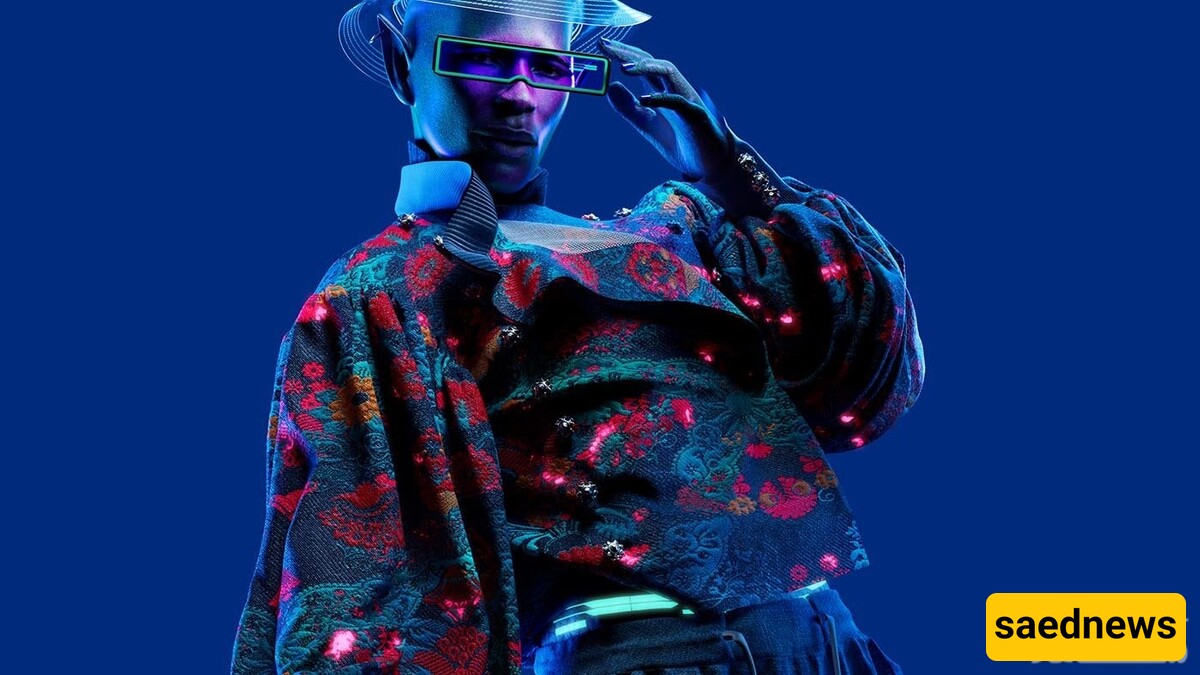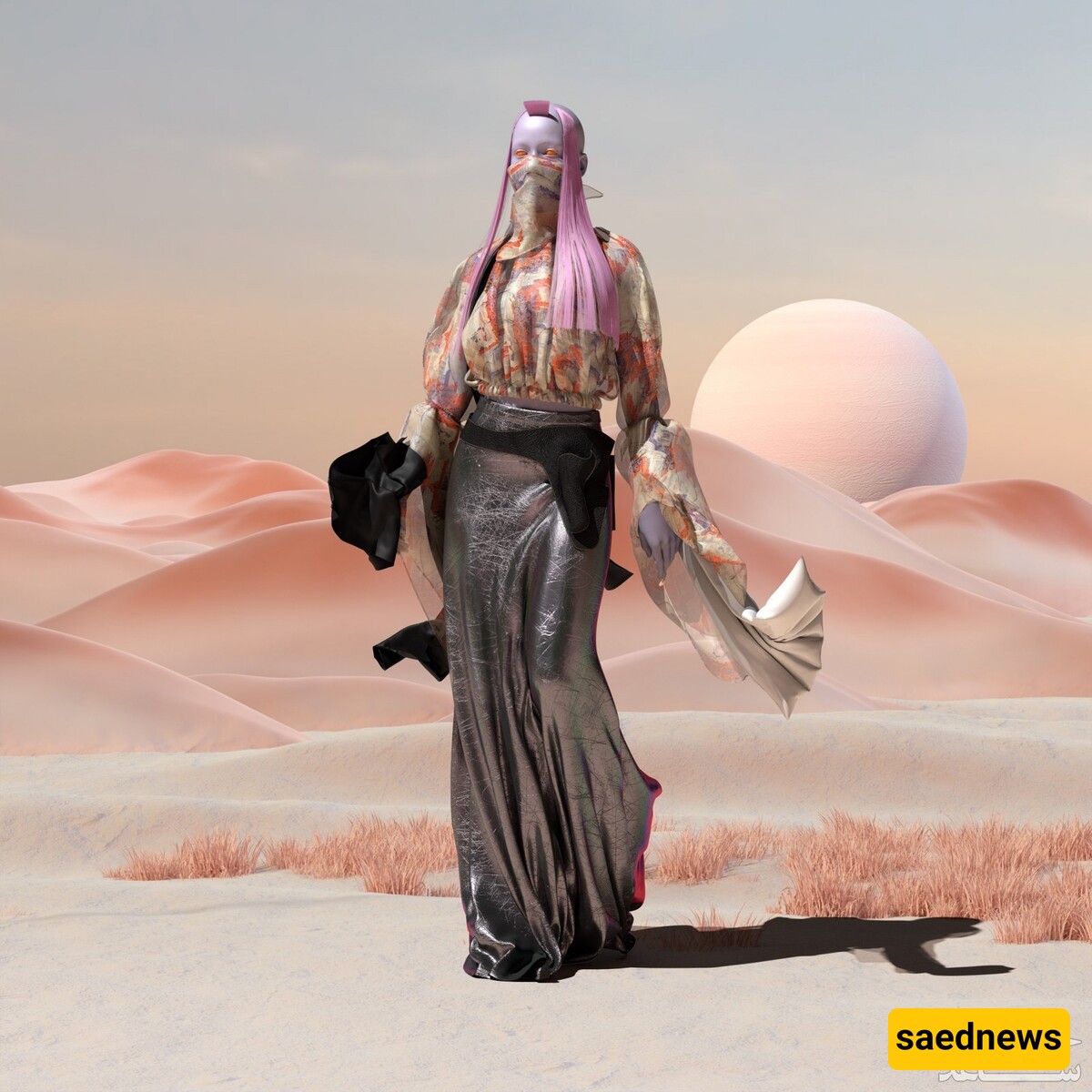The fashion industry has entered a new era, facing some of its most astonishing transformations yet. Virtual fashion is emerging as a replacement for reality—an innovative technology that has both supporters and critics. In this article, we’ll explore the world of digital fashion. Stay with us!

Discover a new way to express yourself through fashion—without harming the planet. Your image is your statement; your style reflects your emotions and thoughts. Fashion is a subtle yet creative form of communication. Now, imagine taking it even further, where fashion is no longer bound by physical limitations.
For decades, digital fashion has been a hot topic in the fashion world, and discussions around it continue to grow. The COVID-19 pandemic over the past year and a half has only heightened its significance. As the crisis confined most of the world's population to their homes, fashion brands and industry professionals faced major challenges. It took months for the fashion industry to adapt to the new reality, but soon, the shift toward digital fashion became the solution.
After months of store closures and canceled fashion weeks, the first post-pandemic summer saw the rise of online fashion weeks, including haute couture and men's fashion weeks. Many brands produced creative videos for these virtual events, while others leveraged video games to showcase their collections.
But where did virtual fashion originate, and what role does it play in the industry?

As the digital world becomes increasingly integrated into our lives, various aspects of real life have made their way into virtual spaces—fashion being one of them. Most people today are familiar with video games and have, at some point, engaged with them. Many games allow players to customize their characters' outfits, and some even let users create avatars that resemble themselves. Digital fashion builds on this concept, designing clothing for virtual identities in today’s digital world.
In recent years, high-end brands like Gucci and Balenciaga have embraced digital fashion, offering their designs within video games. Luxury brand items are now available for purchase in popular online games, allowing players to bring their virtual personas closer to reality.
While video games have played a crucial role in the rise of digital fashion, other factors have also contributed to its growth. One key factor is the emergence of digital models and influencers who have gained popularity on social media. Despite being entirely virtual, these figures have amassed millions of followers on platforms like Instagram and have collaborated with major brands.
Using software like Photoshop, digital outfits can be placed on these virtual personalities, but many brands have taken it a step further by designing exclusive digital clothing for them.
Another driving force behind the rise of virtual fashion is the increasing importance of online fitting and virtual boutiques. In today’s fast-paced world, time is more valuable than ever, and any innovation that saves time is welcomed. The COVID-19 crisis further emphasized this need, as online shopping became the primary means of purchasing goods. This shift made online fitting rooms a necessity for e-commerce fashion stores, further pushing the demand for digital fashion.
Virtual fitting has been widely adopted in East Asian countries, especially in China, where it has been used for years to ease the hassle of trying on clothes. One of the first Western brands to explore this concept was Topshop, which implemented virtual fitting in select stores using Kinect and augmented reality technology. Nike also introduced virtual shoe fitting in its app, allowing users to try on sneakers digitally.
With the high costs of running physical stores and the decline in brick-and-mortar retail during the pandemic, many fashion brands have turned to virtual boutiques. In recent years, brands like Valentino and Gucci have launched virtual showrooms, using digital fashion to enhance their presentations. These brands utilize technologies like 3D printing and computer-generated design to create immersive virtual experiences.
For example, Valentino recently unveiled a virtual boutique where users could explore different sections as if they were physically walking through a store. The boutique showcased the brand’s latest collections, with real-time purchasing options. It also featured online music performances streamed on Valentino’s YouTube channel and a Spotify playlist linked directly to the boutique.
One of the newest applications of digital fashion is in NFTs (non-fungible tokens), built on blockchain technology. Designers and artists can sell digital versions of their creations as NFTs, transferring ownership to buyers. NFTs have quickly become a lucrative avenue for fashion designers, gaining significant popularity in the digital world.
Have you heard of Decentraland? This project, launched in 2015, is a 3D virtual world based on blockchain technology. Unlike most online games, in Decentraland, players directly control the rules of the world through their digital assets, making decisions about governance and in-game policies—something that might seem impossible or even illogical in the real world.
Users can buy virtual land, which initially sold for around $20 during the platform’s 2017 launch but can now fetch up to $100,000. Players can also form communities with like-minded individuals, interact through social media, or even build and sell applications within Decentraland.
The platform also features NFT museums and virtual amusement parks, where users can access services using the platform’s cryptocurrency, MANA. One of the most intriguing aspects is its marketplace, where virtual fashion items are sold—similar to how digital economies function in other blockchain-based games. For instance, to buy a new virtual mask, users need to own some MANA tokens.
For centuries, fashion has been a powerful tool for self-expression. Now, as people spend more time in digital spaces, it’s natural that fashion plays an even greater role in shaping identity—perhaps even more than before. According to a report from Business of Fashion (BoF), some young people feel more satisfied with their virtual identity than their real-life appearance.
The new generation, having spent much of their lives in virtual environments—whether in online classrooms, social interactions, or entertainment—may prefer a digital wardrobe over a physical one. Generation Z, unlike previous generations, has little attachment to physical objects like printed photos or cassette tapes. Instead, they are fully immersed in digital formats. For them, owning and showcasing a digital collection (like NFTs) is more valuable than possessing antique collectibles seen only by a few close acquaintances.
This is where digital fashion seamlessly integrates with the metaverse, creating an exciting market for virtual fashion products. Fashion, as always, remains a tool for self-expression—only now, it extends into the digital realm.
There is no doubt that virtual fashion is the future of the industry. Many experts predict that more brands will soon enter this space, as the digital and virtual world continues to evolve. Fashion is a major part of one’s identity and personality, and as we transition into a more virtual lifestyle, its influence will only grow.
At Sa’ed News, our culture and arts section aims to keep you informed about the latest trends in fashion. We’re here to explore the best of fashion with you. Stay tuned for updates on fashion trends, industry news, and celebrity style analysis!

